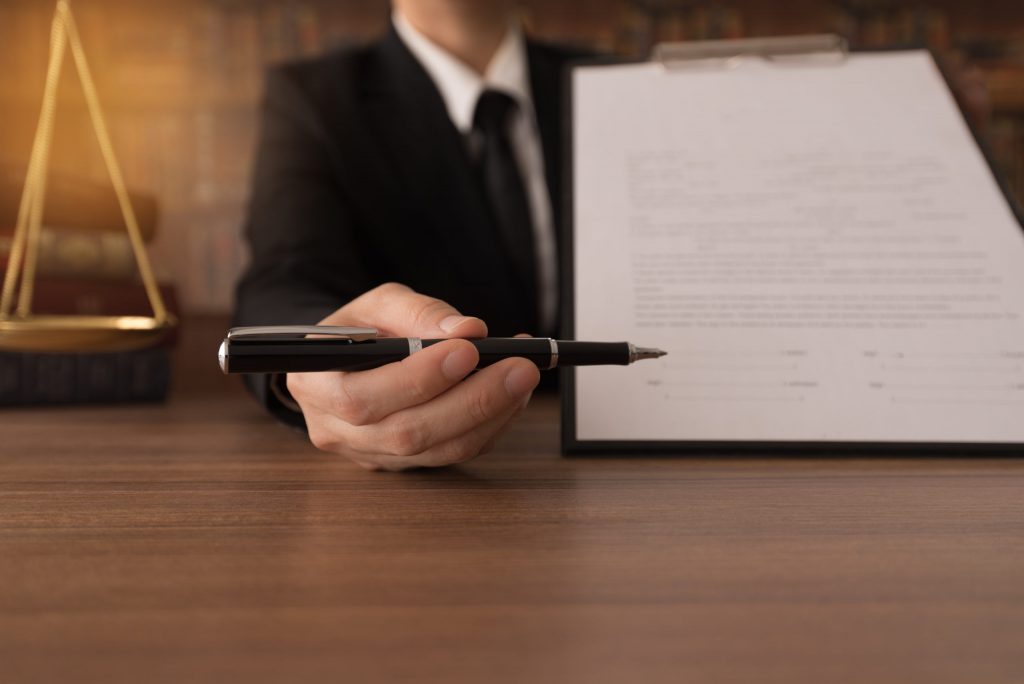Commercial disputes among or involving companies can intensify rapidly. Understanding the timelines, involvement and expectations of the Commercial Litigation process is imperative before planning your strategy.
Starting the Lawsuit
Each party in a lawsuit files initial papers, known as “pleadings.” The pleadings explain each party’s side of the dispute.
Complaint: Litigation begins when the plaintiff files a complaint with the Court and delivers a copy to the defendant as required by the applicable rules. The complaint is the plaintiff’s pleading and describes what the defendant did (or failed to do) that caused harm to the plaintiff. The complaint also states the plaintiff’s legal basis for holding the defendant responsible for that harm.
Answer: Once a defendant has been served with the complaint, an answer must be filed. The defendant is given a specific amount of time to file an answer to the complaint. The answer is the defendant’s pleading and sets forth the defendant’s side of the dispute. The defendant may also file counter-claims against the plaintiff, in a case where the defendant believes that the plaintiff has harmed him and should be held liable for that harm. Sometimes, the plaintiff responds to the defendant’s answer or counter-claims by filing a reply.
In some instances, instead of filing an answer or reply, a party may request that the other party clarify or correct deficiencies in its pleading or may ask the court to dismiss part or all of the suit. This may lead to amended complaints or amended answers. Once the parties have completed the pleading process, the issues for resolution by the court have been defined.
Discovery
Discovery is the method by which parties gather relevant information from each other or from third parties regarding their claims and/or defenses, and thorough preparation is critical to this process. Research of the law, document review and organization, and witness interviews help clients and their lawyers assess the merits of claims and defenses. Discovery may take several forms, discussed in greater detail below. The extent to which these and other steps are needed is determined by the issues of the case.
Discovery is usually the longest part of the case. It begins soon after a lawsuit is filed and often continues until shortly before trial. During discovery, the parties ask each other and for information about the facts and issues of the case. Sometimes, discovery will be sought from persons or entities who are not parties to the case (third-party discovery). Information is gathered in a variety of ways. A party may serve written questions (known as “interrogatories”), which must be answered under oath as if you were in Court. In other instances, a party may request documents from the other party, or, serve requests for admission (which ask a party to admit or deny statements of fact). Another key method of obtaining information is to conduct depositions. In a deposition, a witness is questioned under oath by the parties’ attorneys and the witnesses’ answers are recorded by a court reporter (and, sometimes, by videotape as well). Depositions are used to learn more about the facts of a case and about what the different witnesses contend happened. Depositions also may be used at trial to show inconsistencies in a witness’ story or to question the witness’ credibility. The recorded testimony from a deposition sometimes may also be used at trial in place of a witness who is not able to attend the trial in person.
Expert Witnesses
In certain disputes, a claim or defense requires support from expert witnesses to explain technical information or validate an argument. An expert may be qualified by education, training and/or relevant experience. One or more experts might be needed to explain the connection between the defendant’s conduct and the loss suffered by the plaintiff, or the existence and amount of the plaintiff’s damages. Expert witnesses work closely with a party’s representatives and attorneys to prepare the case.
Motions
A motion is a formal request made to the Court, asking the Court to rule on one or more issues in the case. Although some motions may be made orally, they are most often made in writing. Before trial, the parties may use motions to ask the Court to rule or act. Motions usually pertain to law or facts in the case but, sometimes, they seek clarification or resolution of procedural disputes between the parties. For example, if one party has refused to provide information in discovery, the aggrieved party may make a motion to compel the other party to respond. Other motions, such as a motion for summary judgment, ask the court to dismiss part or all of a plaintiff’s case or a defendant’s defense, avoiding the need to have a trial on those issues. Other motions might ask the court to order a party to exclude evidence from trial.
Trial
The trial is the point in time when the parties come before the court and present evidence in support of their claims or defenses. In some instances, the case is tried to a jury but, in others, there is no jury and the case will be heard only by the judge (known as a “bench trial”). In many instances, right before the trial, each party will provide the judge a document, called a “brief,” that outlines the arguments and evidence to be used at trial. In a jury trial, there is an additional step where the attorneys will question potential jurors during a selection process known as “voir dire.” Once the trial begins, each party presents its outline of the case in an opening statement. After opening statements are made, the parties will present their evidence. Each party may call witnesses or introduce documents and exhibits in support of its arguments. After each witness is called and questioned, the opposing party will be given an opportunity to cross-examine the witness. The plaintiff presents its evidence first, then the defendant presents its evidence. Sometimes, the plaintiff is allowed to present additional evidence, called rebuttal evidence, after the defendant has finished presenting its case. Once all the evidence has been presented, the parties will give their closing arguments (although closing arguments are not always permitted in a bench trial). After closing arguments, the court will instruct the jury on the law to be applied to the evidence. The jury will then deliberate until it has reached a decision or verdict.
Post-Verdict
Although the parties may believe that the case is over after the jury has reached a verdict, that is not always the case. A party may seek to challenge a jury’s verdict. Frequent challenges may allege that the trial court made errors of law or that the jury disregarded the law or evidence. Another remedy may be to seek motion for judgment notwithstanding the verdict (“JNOV”) A JNOV asks the court to disregard the jury’s verdict and enter a different decision. A motion for a new trial asks the court to set aside the jury’s verdict and order a new trial of the case.
Costs and Fees
The party who prevails at trial will usually file a motion asking the court to order the losing party to pay the prevailing party’s costs to prosecute or defend the case. Recoverable costs are defined by rule, statute, or private agreement and generally do not include attorneys’ fees. Recoverable costs rarely cover all out-of-pocket costs a party incurs during the course of a lawsuit. Some statutes and contracts also allow the prevailing party to seek reimbursement of its attorneys’ fees from the losing party, however, that is the exception, rather than the rule The general rule is that parties to a lawsuit should be prepared to pay their own costs and fees.
Appeal
If a party is dissatisfied with the result reached at trial, the party may file an appeal. An appeal asks a higher court to review the trial court proceeding to determine if there were errors that require reversal. Once an appeal is filed, the parties present their arguments in briefs, which are submitted to the appellate court along with the record of evidence from the trial court. The appellate court usually reviews a case for legal error only, however, in certain unusual circumstances, the appellate court may be called upon review factual evidence or override a jury’s findings of fact. The appellate court announces its decision in a document called an opinion. The appellate court will affirm the verdict if it finds that there was no error in the trial court proceeding. If there was an error, however, the appellate court can reverse the verdict or order a new trial. An appeal can extend the litigation process by a year or more.



